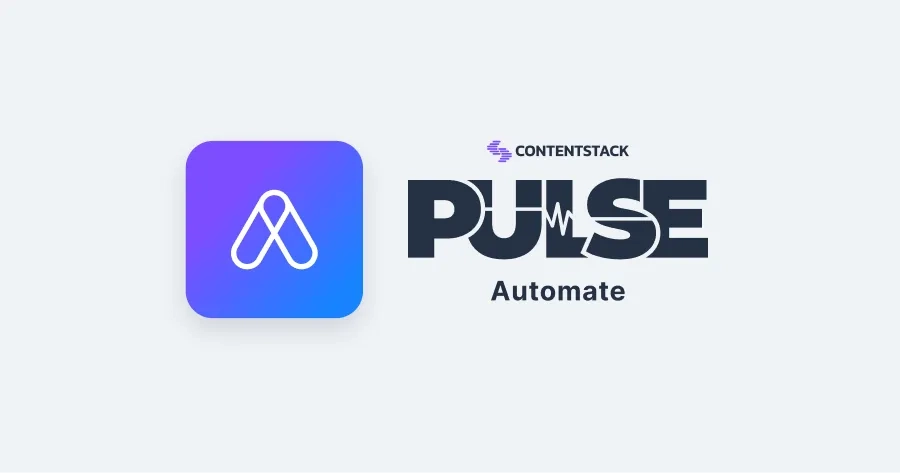Automating content delivery across the lifecycle

The rise of AI-driven automation is transforming the way content is created, managed, and delivered. For digital teams navigating increasingly complex customer journeys, automation isn’t just a convenience—it’s a competitive advantage. And at the center of this transformation is a new mandate: deliver adaptive content experiences that respond in real time to changing needs, preferences, and contexts.
While the promise of adaptive content is powerful, the path to realizing it starts with automation. By intelligently automating repetitive, manual, and operational tasks across the content lifecycle, teams can unlock the capacity to focus on strategy, creativity, and delivering the right content to the right user in the right moment, every time.
Why adaptive content matters
Today’s users expect experiences that are dynamic and personalized, not static and generic. Adaptive content goes beyond simple personalization. It’s about:
- Responding to context in real time, adjusting content based on device, behavior, or interaction patterns.
- Enabling consistency across channels without duplicating work.
- Supporting both human users and intelligent agents, like AI-powered assistants or chat interfaces.
But delivering adaptive content at scale requires a strong foundation of automation. Let’s explore how that looks across the lifecycle.
Automating the content lifecycle
Every stage of the content lifecycle offers opportunities to automate:
Create
- Auto-generate first drafts based on topics and brand tone.
- Instantly translate content to multiple languages.
- Summarize or extract key points from documents and media.
Manage
- Auto-tag content based on keywords or themes.
- Analyze image assets and apply relevant metadata.
- Standardize formatting and structure with "smart paste" features.
Deliver
- Schedule publishing based on user engagement patterns.
- Automatically distribute content across channels or regions.
- Trigger delivery based on user behaviors or system events.
Optimize & reuse
- Surface underperforming content for review.
- Repurpose existing assets into new formats or campaigns.
- Personalize recommendations or variants based on interaction history.
These are just some of the automations already being deployed by teams today. But what’s next? As we look toward more intelligent systems, we start to see a new classification emerge—one that mirrors how human and machine collaboration is evolving.
Three types of automation in the age of agents
While we don’t need to name them as agents yet, we’re entering a world where automation is no longer one-size-fits-all. The next wave of adaptive content delivery will be powered by increasingly sophisticated types of automation:
- Prescriptive automations: These are rule-based, trigger-driven automations designed to simplify routine tasks. They respond to defined inputs with pre-set actions. Example: When content is marked as "Ready for Translation," an automation triggers translations in three languages.
- Autonomous automations: These are context-aware, continuously running systems that can make decisions and take action without human intervention. They adapt based on behavior, content signals, and historical data. Example: An automation that monitors engagement metrics and updates content or surfaces alternatives if performance dips.
- Interactive automations: These allow human users to initiate or guide automation flows through natural language or chat-based interfaces. Example: A content editor asking, "Can you turn this blog into a LinkedIn post and schedule it for next Tuesday?"
Each mode plays a role in delivering adaptive experiences. Prescriptive automations are great for operational consistency. Autonomous ones help optimize and scale. Interactive flows bring flexibility and accessibility to non-technical users.
Looking ahead
As expectations grow, content systems must become more adaptive, intelligent, and user-centered. That means:
- Building automation into every stage of the content lifecycle
- Designing systems that support both human creators and AI agents
- Creating a foundation that can evolve into truly agentic experiences
At Contentstack, we believe the future of digital experience is adaptive by default. While we’re not naming what’s next just yet, we’re actively investing in the architecture and intelligence needed to support the next generation of automation—and the agentic systems that will follow.
The goal isn’t to replace creators. It’s to empower them.
Let’s automate the ordinary, so your team can focus on what makes your content extraordinary.
About Contentstack
The Contentstack team comprises highly skilled professionals specializing in product marketing, customer acquisition and retention, and digital marketing strategy. With extensive experience holding senior positions at renowned technology companies across Fortune 500, mid-size, and start-up sectors, our team offers impactful solutions based on diverse backgrounds and extensive industry knowledge.
Contentstack is on a mission to deliver the world’s best digital experiences through a fusion of cutting-edge content management, customer data, personalization, and AI technology. Iconic brands, such as AirFrance KLM, ASICS, Burberry, Mattel, Mitsubishi, and Walmart, depend on the platform to rise above the noise in today's crowded digital markets and gain their competitive edge.
In January 2025, Contentstack proudly secured its first-ever position as a Visionary in the 2025 Gartner® Magic Quadrant™ for Digital Experience Platforms (DXP). Further solidifying its prominent standing, Contentstack was recognized as a Leader in the Forrester Research, Inc. March 2025 report, “The Forrester Wave™: Content Management Systems (CMS), Q1 2025.” Contentstack was the only pure headless provider named as a Leader in the report, which evaluated 13 top CMS providers on 19 criteria for current offering and strategy.
Follow Contentstack on LinkedIn.






.svg?format=pjpg&auto=webp)
.svg?format=pjpg&auto=webp)
.png?format=pjpg&auto=webp)






.png?format=pjpg&auto=webp)


